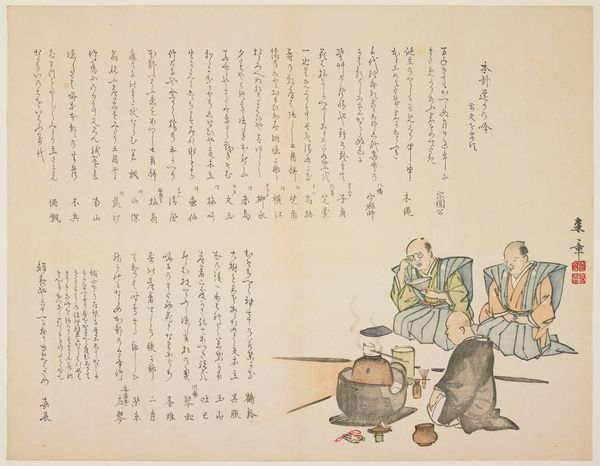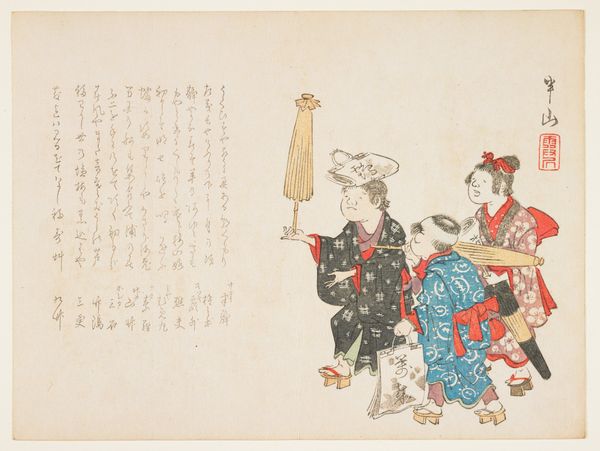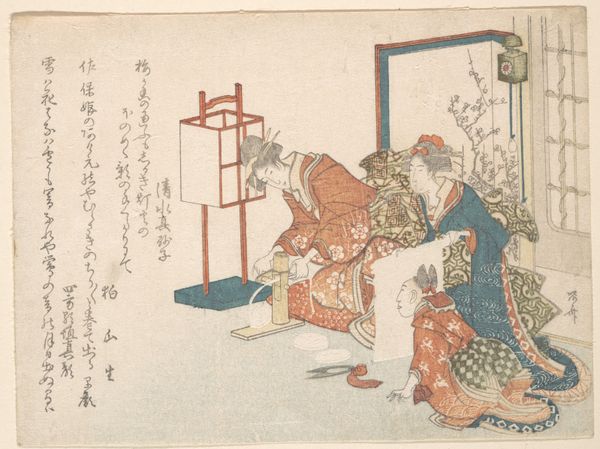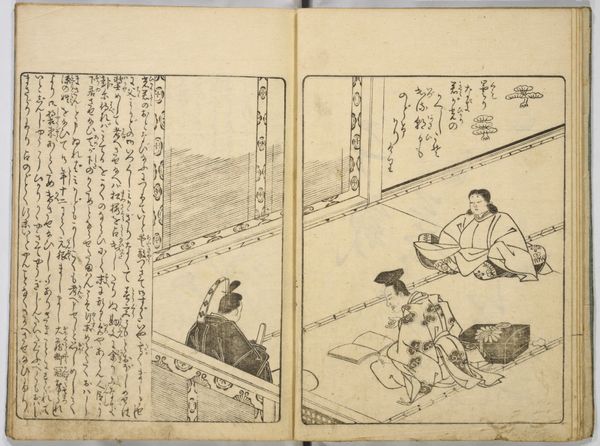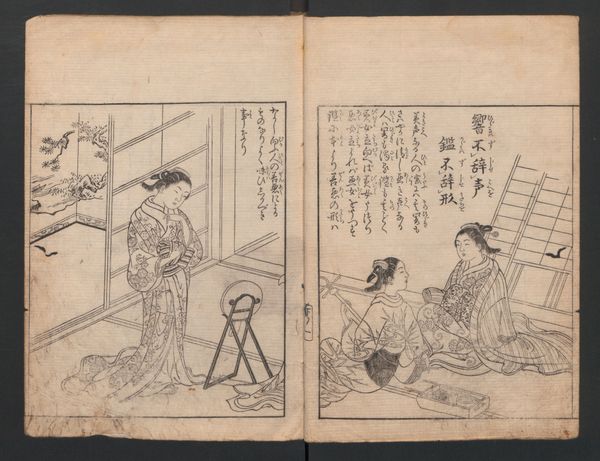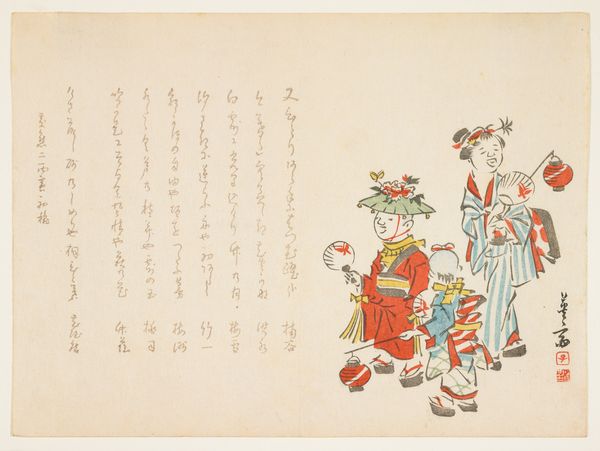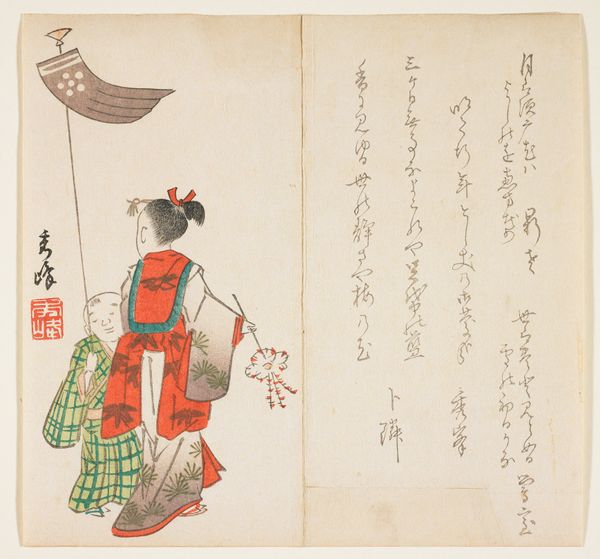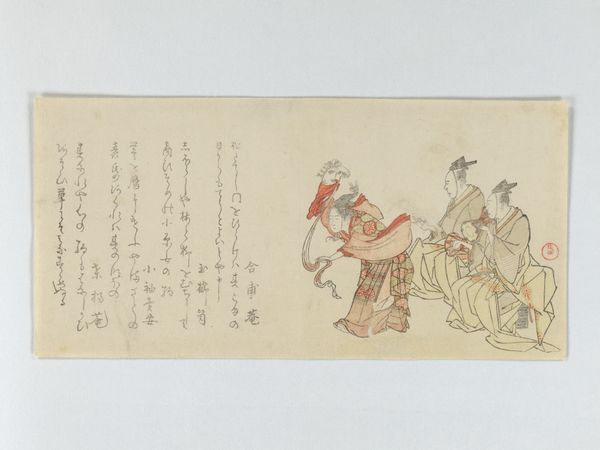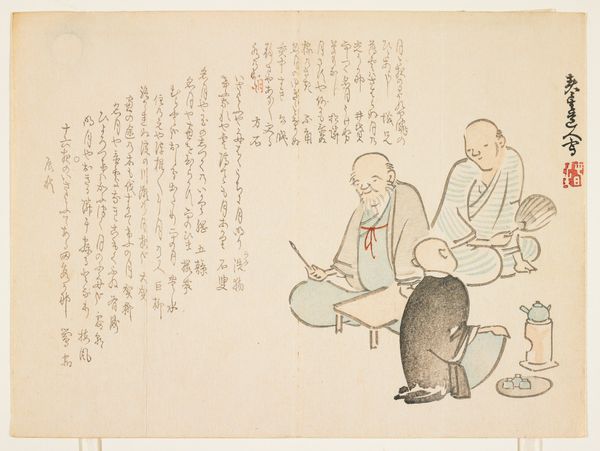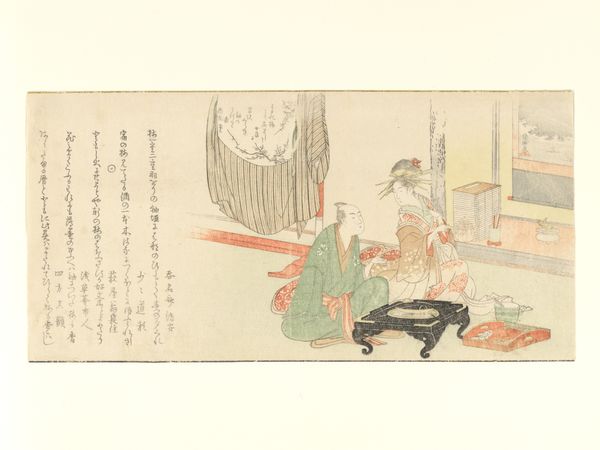
print, watercolor, ink
#
water colours
#
narrative-art
# print
#
asian-art
#
ukiyo-e
#
japan
#
figuration
#
personal sketchbook
#
watercolor
#
ink
#
line
Dimensions: 15 x 19 in. (38.1 x 48.3 cm) (image, sheet)
Copyright: Public Domain
Curator: This watercolor and ink print, likely created between 1820 and 1859 by Nakajima Raisho, depicts an "Ohitaki Festival". The piece is currently held at the Minneapolis Institute of Art. Editor: Immediately, the composition strikes me— the flat perspective and stark lines lend a sense of immediacy, almost like a captured moment. It's a scene imbued with ritual and community. Curator: Indeed. Structurally, the print contrasts detailed figuration in the lower right, focused on people watching a ritual fire, with a sparse architectural drawing near text, all oriented around the central, blazing bonfire. Editor: Considering this artwork originates from the Ukiyo-e tradition, I interpret that fire as more than a visual focal point; it becomes a powerful symbol. Fire is so important cross-culturally: here, maybe of purification, destruction of the old to welcome new beginnings, a celebration, perhaps? How do these celebrations relate to identity and community, in a changing, possibly volatile society? Curator: Precisely! The interplay of line and minimal color blocking direct our eyes. The textual inscriptions, presumably describing or relating to the event, work both as compositional counterweights and sources of objective context, to this subjective human gathering around the fire. The color palette of reds and muted greens and browns enhances the viewing experience. Editor: Ukiyo-e prints served not only as aesthetic objects but also as cultural records, capturing everyday life. It gives voice to the common people of the Edo period, centering the working class and shifting focus from traditional artworks that captured noble and courtly affairs. How might the personal identity or biases of the artist affected these types of seemingly innocuous representations of public life? Curator: A crucial observation! The success here hinges on its exquisite simplicity, not complex depth. Through this, a formal beauty arises. Editor: Yes, art must reveal a great and complex truth, to communicate human experience. Looking at the artist's name, location, cultural relevance—art unveils new worlds. Curator: Precisely. Thank you. This viewing has, for me, offered another new plane to explore the nuances of pictorial structure.
Comments
minneapolisinstituteofart about 2 years ago
⋮
Ohitaki, literally "burning sacred fires," is a long-standing Shinto rite held in the eleventh lunar month. Widely performed in western Japan, it probably began as a ceremony to demonstrate the people's appreciation to the gods for a good harvest. Wooden planks (gomaki) emblazoned with prayers are neatly stacked and set on fire. The prayers are believed to reach the heavens amid the rising smoke. Rice wine and food is ritualistically offered to the gods, shown here by a priest who approaches the fire as three children excitedly welcome him. Fifty poets contributed verses to this production. By depicting this well-established seasonal event, Raishø effectively evoked late autumn, the subject of each of the poems.
Join the conversation
Join millions of artists and users on Artera today and experience the ultimate creative platform.

